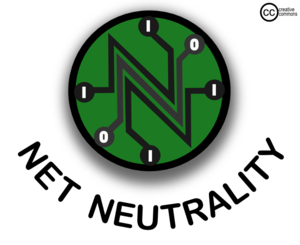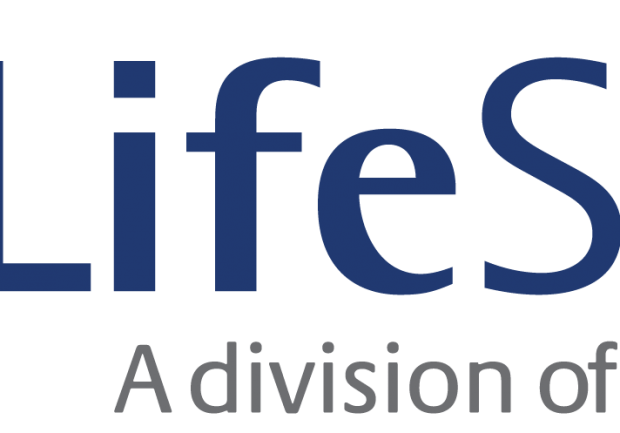 InfoComm 2014 has come and gone. While some people have written that it was a progressive, though slightly uneventful, show in terms of new product releases, there were a lot of other things going on this year worth the time of the 37,048 AV Professionals in attendance. One of the last minute additions to the show this year was a panel on net neutrality and the impact the proposed rules could have on the AV industry.
InfoComm 2014 has come and gone. While some people have written that it was a progressive, though slightly uneventful, show in terms of new product releases, there were a lot of other things going on this year worth the time of the 37,048 AV Professionals in attendance. One of the last minute additions to the show this year was a panel on net neutrality and the impact the proposed rules could have on the AV industry.
When the topic of net neutrality comes up the most common turn the conversation takes is how it will affect your ability to watch things like Netflix, YouTube or Hulu in your home. But the fact remains, the AV industry has made significant strides towards convergence with the IT industry and many of our signals either currently do, or have the ability to travel across network connections that would be affected by the proposed FCC rules for a “fast lane.”
At the show, Robb Woods of Blue Jeans, Simon Dudley of Lifesize, and Bob Romano of Avaya were all extremely generous and shared their time with me as a part of the REDBAND Radio broadcast through AVNation. What’s going to follow here is a recap of some of the key points that were addressed during the panel. You can watch the panel in full below.
Starting off with a bang, Robb Woods hit on one of the keys in regards to the proposed rules for the fast lane when asked about the difference between FCC Section 706 and Title II: “We don’t know what we don’t know yet about what they’re going to try to do. They could limit traffic, they could limit…websites, they could limit a number of things.” One of the biggest topics of conversation is that if the proposed fast lane goes through, the ISPs will have the ability to prioritize data based on which content provider pays for this preferential treatment. The thing that has never been discussed anywhere that I have found is exactly how the ISPs are going to treat the non-priority data. Wouldn’t it be good to have that kind of information before we decide if this fast lane proposal might turn out to be an effective solution?
Of course the fast lane proposal has been getting slammed by many of those discussing the issue online. Simon Dudley brought up the fundamental reason that people should fear this potential model: “If there’s a fast lane, there’s a slow lane. And it means they’ll have the opportunity for the first time to…basically go around to all their customers and charge them depending on how important that traffic is to their customers.” Later in the conversation Mr. Dudley came back to describe this situation as “very mob-like” with the ISPs having the potential to alter content provider’s ability to transmit data effectively. “There might be a 500 ms delay put into all your video calls unless you give us $10M a year. I’m not saying they would do such a thing…I would like it so they don’t have the option.”
 With video conferencing capabilities being more and more available through programs like Skype, Lync, FaceTime, Google Hangouts, and many more, people are taking advantage of these new tools to change the way they are working. One of the issues with these kinds of services, though, is the quality of service. People aren’t expecting the same quality out of these services as they do for the high quality video conferencing solutions installed in their boardrooms. Bob Romano shared this thought: “the value and utility to be able to do these things from devices and wherever you are, [consumers] will put up with lesser quality than they’d expect than if they walked into a conference room…and wanted to have high definition and perfect quality.” With it being unknown as to how the proposed rules could alter the quality of transmission of the higher quality systems this is a part of the discussion that most people might not be considering yet. The millions of conferencing systems installed throughout businesses have the potential to see quality of transmission decrease to these free services. This could also mean if these rules are adopted, the AV industry could see a drastic decrease in the sales of these higher quality solutions because they provide no cost benefit to the customers.
With video conferencing capabilities being more and more available through programs like Skype, Lync, FaceTime, Google Hangouts, and many more, people are taking advantage of these new tools to change the way they are working. One of the issues with these kinds of services, though, is the quality of service. People aren’t expecting the same quality out of these services as they do for the high quality video conferencing solutions installed in their boardrooms. Bob Romano shared this thought: “the value and utility to be able to do these things from devices and wherever you are, [consumers] will put up with lesser quality than they’d expect than if they walked into a conference room…and wanted to have high definition and perfect quality.” With it being unknown as to how the proposed rules could alter the quality of transmission of the higher quality systems this is a part of the discussion that most people might not be considering yet. The millions of conferencing systems installed throughout businesses have the potential to see quality of transmission decrease to these free services. This could also mean if these rules are adopted, the AV industry could see a drastic decrease in the sales of these higher quality solutions because they provide no cost benefit to the customers.
 With video conferencing and remote collaboration technology being the emphasis of the panelists, I did have to ask the broader topic question as to whether these proposed FCC rules will alter the direction the AV industry goes when considering AV/IT convergence. Mr. Romano wasted no time in putting the potential reversal to bed: “You cannot get the pig back by reversing the sausage machine.” We are going to continue to head towards full AV/IT convergence and one of the key reasons for that was made by Robb Woods when he said “you’re seeing more and more and more of what we do as an industry happening from home networks. [It’s just been on a constant trajectory].” This gave Simon Dudley the ability to put the exclamation point on the issue when he stated “the most important connection in a company today is its internet connectivity.” Business has moved to the point where so much communication is done across the network through e-mail, VoIP, and video conferencing that without a strong network backbone business communication could break down. All of these signals have to pass over a network, and while things like e-mail or messaging services are unlikely to be affected by these regulations, the amount of bandwidth required to handle video conferencing and collaboration could change our ability to work remotely.
With video conferencing and remote collaboration technology being the emphasis of the panelists, I did have to ask the broader topic question as to whether these proposed FCC rules will alter the direction the AV industry goes when considering AV/IT convergence. Mr. Romano wasted no time in putting the potential reversal to bed: “You cannot get the pig back by reversing the sausage machine.” We are going to continue to head towards full AV/IT convergence and one of the key reasons for that was made by Robb Woods when he said “you’re seeing more and more and more of what we do as an industry happening from home networks. [It’s just been on a constant trajectory].” This gave Simon Dudley the ability to put the exclamation point on the issue when he stated “the most important connection in a company today is its internet connectivity.” Business has moved to the point where so much communication is done across the network through e-mail, VoIP, and video conferencing that without a strong network backbone business communication could break down. All of these signals have to pass over a network, and while things like e-mail or messaging services are unlikely to be affected by these regulations, the amount of bandwidth required to handle video conferencing and collaboration could change our ability to work remotely.
 The thing to remember is that these proposed “fast lane” rules are not in effect yet. They are open for public debate on the fcc website at www.fcc.gov/comments. It’s going to take all of us to stand up and present a reasonable argument as to why the proposed rules are not best for how network traffic should be handled, but it has to go farther than just us. Mr. Woods hit the nail on the head with his comment “it’s the end users, the consumers, that’s where the weight is…we have to find a way to educate them on this.” He went on to say “a more effective way would be to use petitioning of the FCC. Petition within InfoComm to petition the FCC to say…’here are the concerns of the industry professionals.’” We, as an industry, have to attack this from both ends by reaching out to our customers and clients to make sure they understand how this could adversely affect them while also asking our leadership to make sure the concerns of the industry are heard.
The thing to remember is that these proposed “fast lane” rules are not in effect yet. They are open for public debate on the fcc website at www.fcc.gov/comments. It’s going to take all of us to stand up and present a reasonable argument as to why the proposed rules are not best for how network traffic should be handled, but it has to go farther than just us. Mr. Woods hit the nail on the head with his comment “it’s the end users, the consumers, that’s where the weight is…we have to find a way to educate them on this.” He went on to say “a more effective way would be to use petitioning of the FCC. Petition within InfoComm to petition the FCC to say…’here are the concerns of the industry professionals.’” We, as an industry, have to attack this from both ends by reaching out to our customers and clients to make sure they understand how this could adversely affect them while also asking our leadership to make sure the concerns of the industry are heard.
With the might and money behind the ISP industry lobby Bob Romano pointed out “I don’t know that we’re really ever going to be able to stop the fact that content providers that use a lot of the network are going to get charged more for that, one way or another.” And I completely agree with him, but that doesn’t mean the proposals that have been set forth are what is going to work best for our future as providers of devices that communicate across a network.
This issue still has a few more months to evolve and the FCC has shown that it is willing to listen to valid complaints. Take, for example, their recent action in asking for the network traffic data for Netflix on Comcast networks to ensure that data throttling is not occurring. But if we don’t raise our voices and get our customers to stand with us, no change can happen. Now is the time to stand up and let your concerns be heard. If we wait too long to voice the concerns of our industry we may be caught in a situation that no one making these decisions had ever considered resulting in drastic changes to our industry trajectory.




Pingback: Net Neutrality Posts | Sound Reason